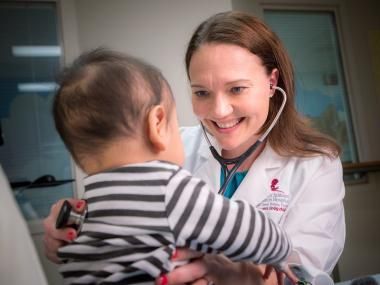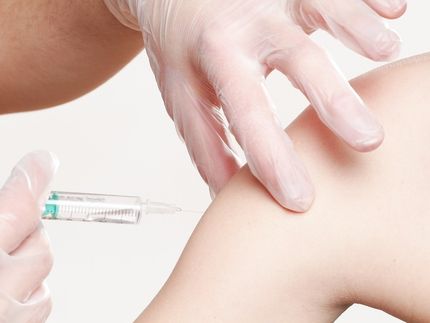Blood stem-cell transplant regimen reverses sickle cell disease in adults
A modified blood adult stem-cell transplant regimen has effectively reversed sickle cell disease in 9 of 10 adults who had been severely affected by the disease, according to results of a National Institutes of Health study in the New England Journal of medicine. The trial was conducted at the NIH Clinical Center in Bethesda, Md., by NIH researchers at the National Institute of Diabetes and Digestive and kidney diseases (NIDDK), the National Heart, Lung and Blood Institute (NHLBI), and the National Institute of Allergy and infectious diseases.
"This trial represents a major milestone in developing a therapy aimed at curing sickle cell disease," said NIDDK Director Griffin P. Rodgers M.D., a co-author of the paper. "Our modified transplant regimen changes the equation for treating adult patients with severe disease in a safer, more effective way."
In trials by other investigators, nearly 200 children with severe sickle cell disease were cured with bone marrow transplants after undergoing a regimen in which their own marrow was completely destroyed with chemotherapy. That regimen, however, had proven too toxic for adults, who have years of accumulated organ damage from the disease and are less able to tolerate complete marrow transplantation.
In contrast to the established method in children, this adult trial sought to reduce toxicity by only partially replacing the bone marrow. The much longer lifespan of normal red blood cells, compared to sickle red blood cells, allows the healthy cells to outlast and completely replace the disease-causing cells.
To achieve this goal, the investigators used a low dose of radiation to the whole body and two drugs, alemtuzumab and sirolimus, to suppress the immune system. Alemtuzumab depletes immune cells, but does not adversely affect blood stem cells. Sirolimus does not block the activation of immune cells, but inhibits their proliferation, creating a balance that potentially helps prevent rejection of the new stem cells.
The radiation favorably conditions the bone marrow, where donor stem cells move in and begin producing new, healthy red blood cells. After a median two and one half years follow-up, all 10 recipients were alive and sickle cell disease was eliminated in nine.
"Our patients have had a remarkable change in their lives," said John F. Tisdale, M.D., the trial's principal investigator in the NIH Molecular and Clinical Hematology Branch. "They are no longer being admitted to the hospital for frequent pain crises, they have been able to stop chronic pain medications, go back to school and work, get married and have children. Given these results, our regimen will likely have broad application to other nonmalignant diseases and can be performed at most transplant centers."
The investigators performed human leukocyte antigen (HLA) typing on 112 people with severe sickle cell disease and 169 healthy siblings. Of these, 10 patient-sibling identical matches were found. Blood stem cells collected from the blood of healthy donors were then infused into their siblings, ages 16 to 45 years.
This relatively low toxicity regimen allowed patients to become tolerant to the donor immune cells and to achieve stable mixed donor chimerism. Chimerism is a condition in which an individual has two genetically distinct types of cells in the blood. This mixture of host and donor cells was sufficient to reverse sickle cell disease. In most patients the donor's red blood cells completely replaced the recipient's.
"Remarkably, the treatment did not result in graft-versus-host disease for any of the participants," noted Susan B. Shurin, M.D., acting director of the NHLBI. GVHD is a common complication of stem cell transplantation and can lead to serious problems, such as rash, diarrhea and nausea, liver disease, or death. "We are continuing to explore better treatments with fewer side effects to help the millions of sickle cell patients worldwide. This is a very important study because it lessens the toxicity of a therapy known to be highly effective."
Topics
Organizations
Other news from the department science

Get the life science industry in your inbox
By submitting this form you agree that LUMITOS AG will send you the newsletter(s) selected above by email. Your data will not be passed on to third parties. Your data will be stored and processed in accordance with our data protection regulations. LUMITOS may contact you by email for the purpose of advertising or market and opinion surveys. You can revoke your consent at any time without giving reasons to LUMITOS AG, Ernst-Augustin-Str. 2, 12489 Berlin, Germany or by e-mail at revoke@lumitos.com with effect for the future. In addition, each email contains a link to unsubscribe from the corresponding newsletter.




















































